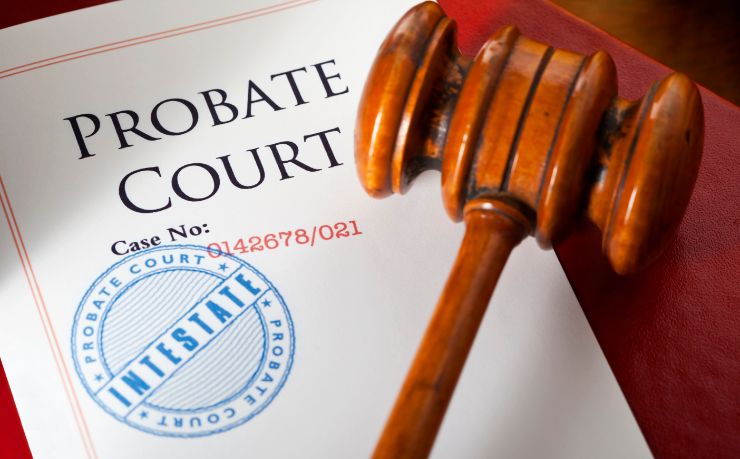Probate Estate Taxpayer Employer Identification Number (EIN)

When a person passes away and an estate is opened to handle the distribution of the person’s assets and other legal matters, the first thing those handling the estate should do is obtain an Employer Identification Number (EIN) to identify the estate to the Internal Revenue Service (IRS). In this blog I use the term “estate representative” to include a representative or executor for an estate. Although the IRS uses the term “employer EIN” the estate is required to obtain one whether or not it is an employer. The same number is used by California taxing authorities. If you are represented by a probate lawyer or you have retained an accountant, either of them can obtain the EIN for you.
The EIN is required because an estate representative may need to file federal and California income tax returns (Forms 1041 and 541, respectively). The estate representative must file a federal income tax return (Form 1041) if the estate has:
- gross income for the tax year of $600 or more, or
- a beneficiary who is a nonresident alien.
What kind of income would an estate have? Common examples are rents from real estate in the estate, salary that wasn’t paid to the deceased person before death, or interest on an estate bank account. The representative must give the EIN number to banks and corporations paying interest and dividends, and to other persons who are required to file IRS Information Forms 1096 and 1099-A through 1099-S. Treas Reg §301.6109-1(b).
If you promptly distribute all the estate assets to the people who inherit them, the estate may not have income, and you may not need to file an income tax return for it. For example, if the deceased person owned a house in joint tenancy with his spouse, and had payable-on-death designations on his bank accounts, those assets will pass immediately to their new owners at death. They won’t generate income for the estate.
You should consult your accountant to determine if you should obtain an EIN for an estate. This can be easily accomplished online, via telephone, by mail, or by fax. Consult the IRS Instructions for Form SS-4 for details. The EIN is obtained by filing IRS Form SS-4, which may be obtained on the IRS website at http://www.irs.gov, by calling the IRS at 800-829-3676, or from any office of the Social Security Administration.
When applying by telephone, the SS-4 form should be completed before the call is made, because the IRS representative will ask some of the questions that are answered in the form. After the IRS representative has assigned the number, the number should be typed or written clearly in the upper right-hand corner of the SS-4 form, and a copy retained. If requested by the IRS representative, the signed form should then be mailed or faxed within 24 hours to the address provided by the representative.
Form SS-4 is generally self-explanatory, and is not difficult to complete. The instructions accompanying the form require that line 3 contain the name of the representative. It is also helpful to include the representative’s title (e.g., executor or representative, as applicable). The estate’s fiscal year must be specified on Form SS-4. It is often difficult to select the most advantageous tax year during the early stages of estate administration. However, the year indicated on Form SS-4 is not binding. The representative may change the taxable year without the consent of the IRS at any time until the estate’s first fiduciary income tax return is filed. IRC §441(a).
If you wish to gain more information on California probate please contact me for a free consultation. I will spend time with you to answer your questions. From my office in Southern California, I represent families in all Southern California counties, including Imperial County, Los Angeles County, Orange County, San Bernardino County, San Diego County, others spread across the state and interested parties outside California.
To schedule a consultation, call me toll free at 800-575-9610 or locally at 760-989-4820. I enjoy meeting in person whenever possible, but am also available via Skype or through my online contact form.
Disclaimer: This article is intended to provide general information. The content of this publication is for informational purposes only. Neither this publication nor its author is rendering legal or other professional advice or opinions on specific facts or matters. No attorney-client relationship is created by this advisory, nor by any response to the information herein, unless and until a conflicts review has been conducted by William K. Sweeney, and a written agreement containing all terms of representation has been signed.
Copyright © William K. Sweeney, Attorney at Law. All rights reserved.







